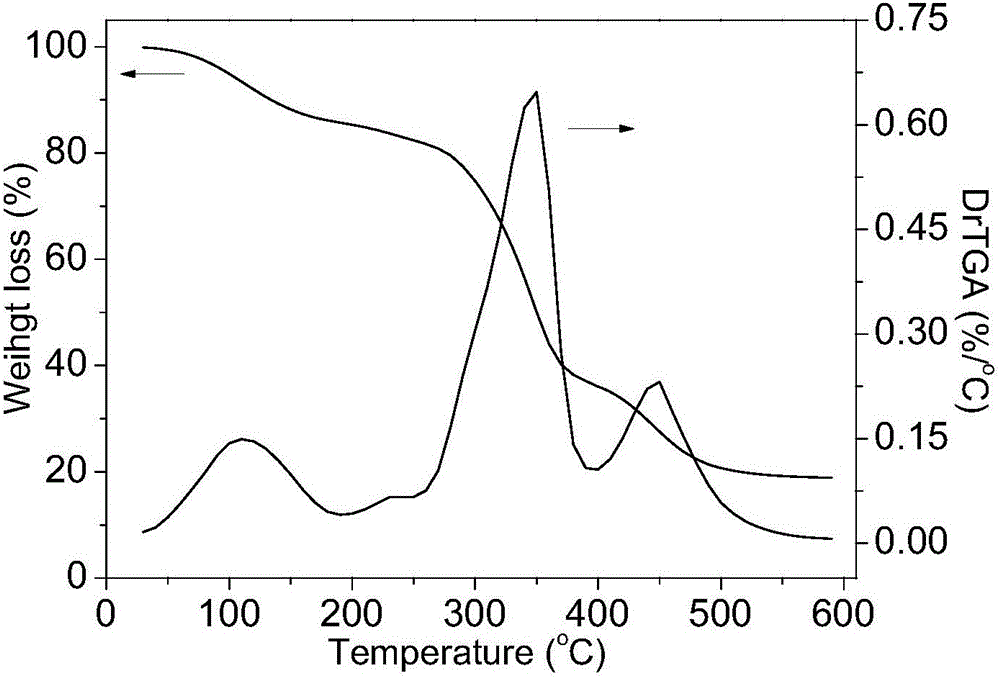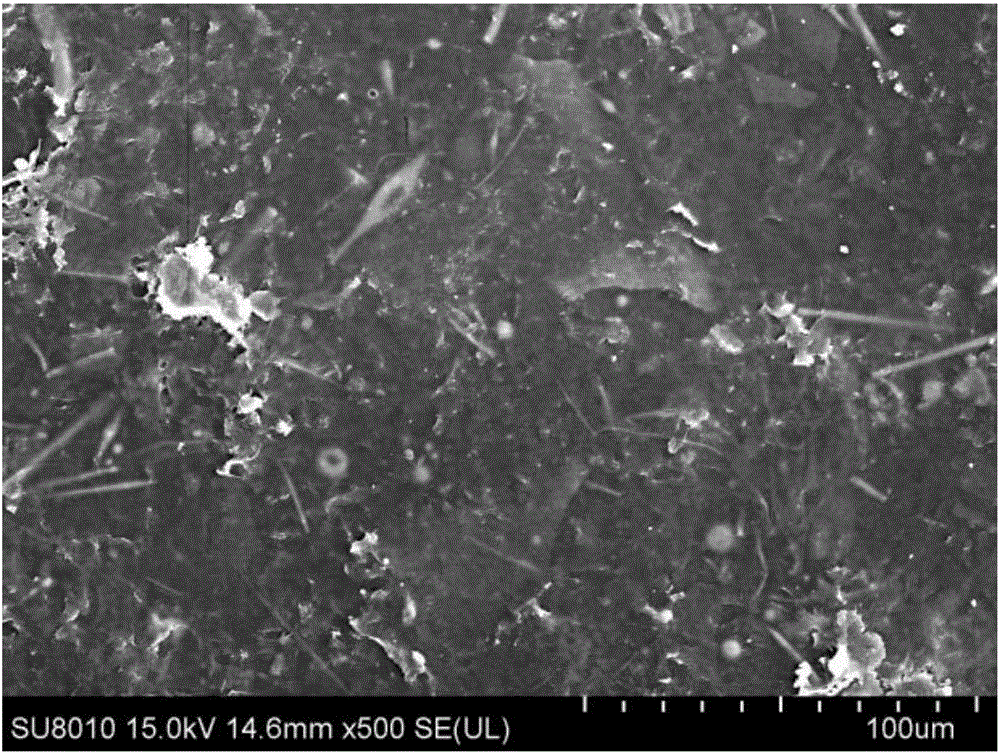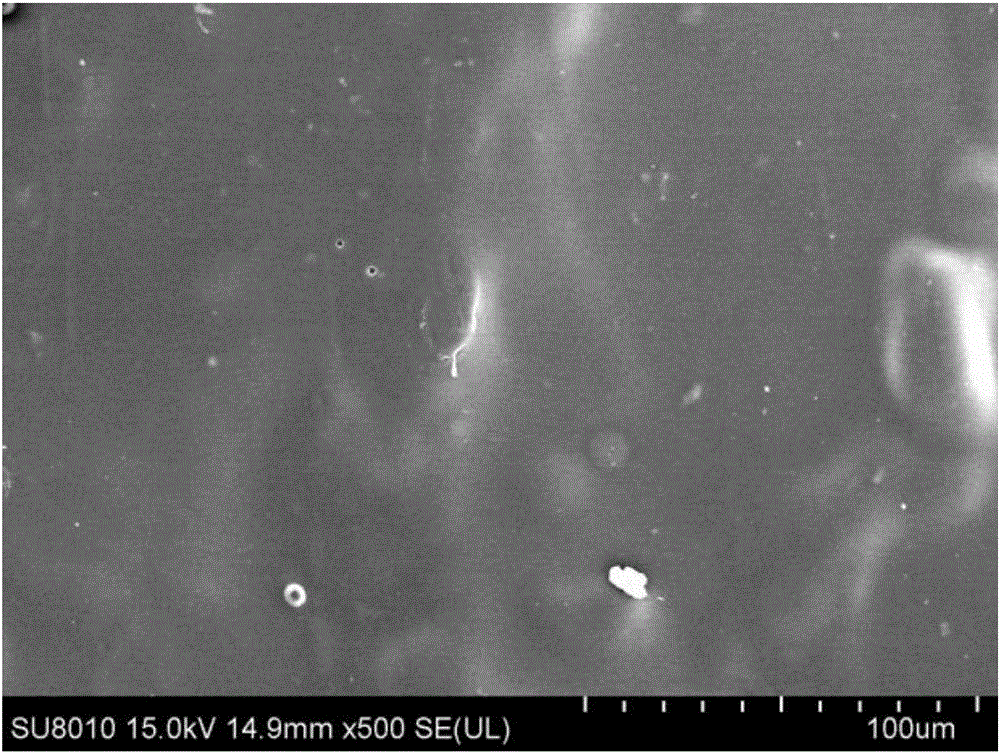Preparation method of hybrid membrane for removing strontium ions in radioactive wastewater
A technology of radioactive wastewater and hybrid membrane, applied in radioactive purification, nuclear engineering, etc., can solve the problems of incomplete coating of yeast/silicon complex, many processing steps, complicated operation process, etc., to increase thermal stability and resistance Radiation performance, simple operation process, and the effect of increasing the removal effect
- Summary
- Abstract
- Description
- Claims
- Application Information
AI Technical Summary
Problems solved by technology
Method used
Image
Examples
Embodiment 1
[0037] A method for preparing a hybrid membrane for removing strontium ions in radioactive wastewater, the specific steps are as follows:
[0038] (1) Preparation of 5% PVA aqueous solution:
[0039] Add 50g of polyvinyl alcohol (PVA) with an average degree of polymerization of 1750±50 to a 250mL container equipped with a stirrer, then add an appropriate amount of deionized water, and in the air at a temperature of 92°C, continuously stir the A mixture of PVA and water until the PVA is completely dissolved, continue to stir for 2 hours to obtain a solution, transfer the solution to a 1000mL volumetric flask after cooling, add a certain amount of deionized water, shake evenly, and then add an appropriate amount of deionized water until the solution reaches Up to the full scale of the volumetric flask, shake it evenly again to prepare 1000g of PVA aqueous solution with a concentration of 5% by mass.
[0040] (2) Preparation of chitosan-epichlorohydrin cross-linked product:
[...
Embodiment 2
[0058] Using the same experimental device, operating steps and the same ingredient ratio as in Example 1, the non-woven fabric is immersed in the above-mentioned coating solution after static degassing, and the coating film is dipped on the support non-woven fabric until a membrane is obtained. , the membrane and the non-woven fabric were placed together at room temperature for 24 hours, and then they were convectively dried at 60°C for 6 hours. After cooling, the membrane and the support were not separated, and the non-woven fabric with the support was obtained. hybrid membrane.
[0059] The hybrid membrane prepared in this example was subjected to adsorption of 0.4g / L of SrCl 2 The experiment of strontium ions in the solution shows that: under the conditions of 25°C and pH=3, the hybrid film is resistant to Sr 2+ The adsorption capacity is 2.81 mg / g; it can be seen that the hybrid membrane can be used to adsorb and remove strontium ions in strontium-containing aqueous solut...
Embodiment 3
[0062] Using the same experimental device, operating steps and the same ingredient ratio as in Example 1, first dissolve the coating solution with 30mL of n-butanol, and then spray the resulting material on the support glass plate until the film is obtained. , then vacuum-dried at 80° C. for 3 h, cooled at room temperature for 6 h, and then separated the membrane from the support glass plate to obtain a hybrid membrane without a support.
[0063] The hybrid membrane prepared in this example was subjected to adsorption of 0.1g / L of SrCl 2 The experiment of strontium ions in the solution shows that: under the conditions of 45°C and pH=5, the hybrid film is resistant to Sr 2+ The adsorption capacity is 2.64 mg / g; it can be seen that the hybrid membrane can be used to remove strontium ions in aqueous solution by adsorption method.
[0064] To sum up: In this example, a hybrid membrane that can be used to remove strontium ions in radioactive wastewater was prepared.
PUM
 Login to View More
Login to View More Abstract
Description
Claims
Application Information
 Login to View More
Login to View More - R&D
- Intellectual Property
- Life Sciences
- Materials
- Tech Scout
- Unparalleled Data Quality
- Higher Quality Content
- 60% Fewer Hallucinations
Browse by: Latest US Patents, China's latest patents, Technical Efficacy Thesaurus, Application Domain, Technology Topic, Popular Technical Reports.
© 2025 PatSnap. All rights reserved.Legal|Privacy policy|Modern Slavery Act Transparency Statement|Sitemap|About US| Contact US: help@patsnap.com



